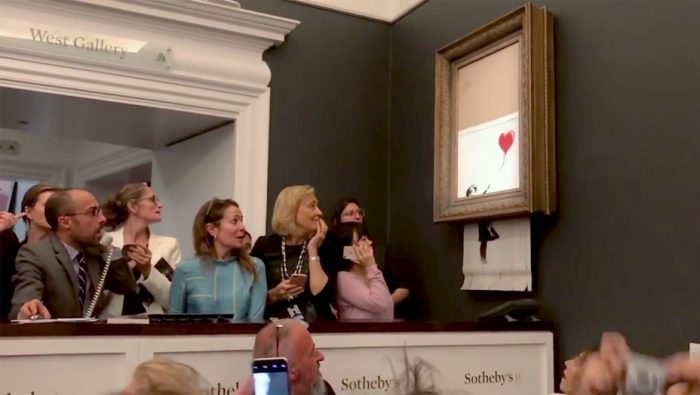In a fully-loaded episode, Allison and Michael discuss the art historical trends and challenges of today, with a discussion of digital, indie, and multi-media art. Then they present a flyby of how the various movements covered in this season might apply to or inform artists and patrons now.
Stay tuned at the end for “Before the Silver Tether Breaks,” composed and arranged by Phil Hodges, from Death is Their Shepherd, by Physick.

“Girl with Balloon” / “Love is in the Bin”
Banksy
2018


For art audiences i want them to break out of the Consumer Reports or Yelp mindset of appreciating art. More than commissioning art and letting dollars do the talking, there is more to art support than even that.
I read this article, “Disturbing, not pleasing, should be art’s role”, about the closing keynote address Frie Layson gave at the 2015 Australian Theatre Forum. She was addressing theatre, but I firmly believe this is an art issue in general.
‘How can we make the audience a partner in adventure instead of a consumer?
‘How can we communicate with audiences that theatre is a living art form, every night created again and again. And fragile. *That even the biggest artists also make work that is not fantastic?*
‘We should valorise the risk, the adventure, the ephemeralness of theatre, the uniqueness of the experience, the temporary community that is created every evening again with the actors and the audience.’
Not everything Alvin Ailey choreographed was _Revelations_. Not everything DaVinci created was great.
“The Long Game Part 1: Why Leonardo DaVinci was once a loser”
An artist has to go through a lot of bad work to get to the good stuff. Neither the audience nor the artist should be discouraged with that. In a sense bad art is a good sign, that people haven’t given up.
Mako Fujimura, “Premodern art asked how do you paint a flower? Modern art asked what is a flower? Postmodern art asked is there a flower?’
To me that is the lesson of art history. Each movement addressed a different set of questions and concerns. Either the old questions weren’t sufficiently answered, they outgrew there usefulness, or they were the wrong questions. So new questions were needed. As such new answers were needed. Art was at the avant garde of asking and seeking answers to those questions. That means each generation didn’t give up. Even the most nihilistic of art is a sign of hope, an act of faith. If all is truly lost, why then create? Creating art is intrinsically generative. When we cease to create art, then all IS truly lost.
I disagree that there is some reason to always study classical technique. The notion of “you have to know the rules to break them” only applies to if those are the rules you want to break. Otherwise, you might as well be saying “You have to know the rules of backgammon too play basketball.” It makes no sense.
As for AI, right now it really is, at best, a new medium. There is no AI that creates art of its own volition. It is the result of human generated algorithms that then hits the “On” button. When AI burns out and commits suicide at 27 years old, then I’ll believe it is creative.
Great series, gang. Good job covering a story that took centuries to create.
Joe